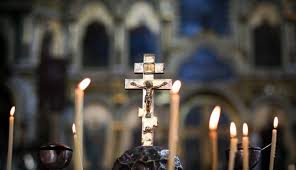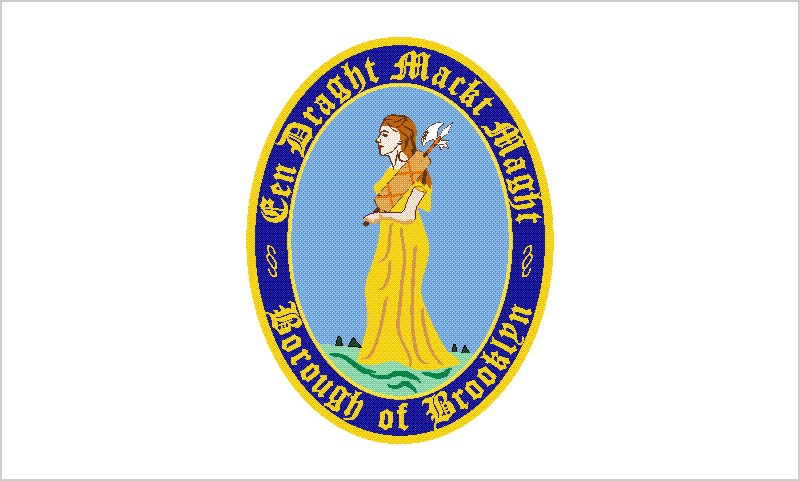Post by magdalena on Jul 24, 2017 7:59:21 GMT -5
The Apse Mosaic -- Sacre Coeur, Paris
www.sacre-coeur-montmartre.com/english/history-and-visit/article/the-apse-mosaic
Inaugurated in 1923, the 475 square metre Mosaic of Christ in Glory by Olivier Merson, H. M. Magne and R. Martin is one of the largest mosaics in the world. It represents the risen Christ, clothed in white and with arms extended, revealing a golden heart.
Surrounding him, in various sizes, a world of adorers is represented, including the Saints who protect France: the Virgin Mary and Saint Michael, Saint Joan of Arc, as well as a personification of France offering her crown and Pope Leo XIII offering the world.
On either side, in two rows of gilded architecture, the homage of the Church (left) and France (right) to the Sacred Heart.
Homage of the Catholic Church:
From the left, Pope Clement XIII who instituted the feast of the Sacred Heart, Pope Pius IX who extended it to the universal Church, Pope Leo XIII (offering the globe) consecrating the human race to the Sacred Heart. These are followed by figures symbolizing the five continents.
Homage of France:
From the right, various historical events linking France to the Sacred Heart are recalled: the vow of Marseilles during the plague of 1720; the vow of the Temple with Louis XVI and the royal family (1792); the national vow of generals Sonis and de Charrette carrying the banner of the Sacred Heart (1870); the initiators of the vow, Alexandre Legentil and Hubert Rohault de Fleury (1871); the reporter on the draft law at the French Parliament (1873); the Cardinals of Paris (Cardinals Guibert, Richard and Amette) who cooperated in the building and embellishment of the Basilica.
The Heavenly Church is placed on the “second floor” of the mosaic, encircling the ceiling of the apse where the Holy Trinity is represented (above Christ are the Holy Spirit in the form of a dove and the face of God the Father who holds and blesses the world), and in two rows the Saints especially linked to the Sacred Heart of Jesus (left) and the Saints of France (right).
Heavenly Church: St Peter, St John, St Paul, St Ignatius of Antioch, St Agnes, St Augustine, St Dominic, St Francis of Assisi, St Ignatius Loyola, St Gertrude, St Catherine of Siena, St Rose of Lima, St Theresa of Avila.
Saints of France: St Lazarus of Marseilles, St Mary-Magdalen, St Martha, St Denis, St Martin, St Geneviève, St Bernard, St Louis, St François de Sales, St Vincent de Paul, St Margaret-Mary, St Jean-Eudes, St Madeleine-Sophie Barrat.
At the base of the mosaic is a Latin inscription stating that the construction of the Basilica is a gift from France to the Sacred Heart of Christ: “To the Sacred Heart of Jesus, France fervent, penitent and grateful.”
The word “penitent”, often misinterpreted, has here no political connotation. It refers to an acknowledgement of the sins of mankind as the source of the misfortunes and suffering of humanity and the expression of a desire to return to God.
The word “grateful” was added after the First World War.
www.sacre-coeur-montmartre.com/english/history-and-visit/article/the-apse-mosaic
Inaugurated in 1923, the 475 square metre Mosaic of Christ in Glory by Olivier Merson, H. M. Magne and R. Martin is one of the largest mosaics in the world. It represents the risen Christ, clothed in white and with arms extended, revealing a golden heart.
Surrounding him, in various sizes, a world of adorers is represented, including the Saints who protect France: the Virgin Mary and Saint Michael, Saint Joan of Arc, as well as a personification of France offering her crown and Pope Leo XIII offering the world.
On either side, in two rows of gilded architecture, the homage of the Church (left) and France (right) to the Sacred Heart.
Homage of the Catholic Church:
From the left, Pope Clement XIII who instituted the feast of the Sacred Heart, Pope Pius IX who extended it to the universal Church, Pope Leo XIII (offering the globe) consecrating the human race to the Sacred Heart. These are followed by figures symbolizing the five continents.
Homage of France:
From the right, various historical events linking France to the Sacred Heart are recalled: the vow of Marseilles during the plague of 1720; the vow of the Temple with Louis XVI and the royal family (1792); the national vow of generals Sonis and de Charrette carrying the banner of the Sacred Heart (1870); the initiators of the vow, Alexandre Legentil and Hubert Rohault de Fleury (1871); the reporter on the draft law at the French Parliament (1873); the Cardinals of Paris (Cardinals Guibert, Richard and Amette) who cooperated in the building and embellishment of the Basilica.
The Heavenly Church is placed on the “second floor” of the mosaic, encircling the ceiling of the apse where the Holy Trinity is represented (above Christ are the Holy Spirit in the form of a dove and the face of God the Father who holds and blesses the world), and in two rows the Saints especially linked to the Sacred Heart of Jesus (left) and the Saints of France (right).
Heavenly Church: St Peter, St John, St Paul, St Ignatius of Antioch, St Agnes, St Augustine, St Dominic, St Francis of Assisi, St Ignatius Loyola, St Gertrude, St Catherine of Siena, St Rose of Lima, St Theresa of Avila.
Saints of France: St Lazarus of Marseilles, St Mary-Magdalen, St Martha, St Denis, St Martin, St Geneviève, St Bernard, St Louis, St François de Sales, St Vincent de Paul, St Margaret-Mary, St Jean-Eudes, St Madeleine-Sophie Barrat.
At the base of the mosaic is a Latin inscription stating that the construction of the Basilica is a gift from France to the Sacred Heart of Christ: “To the Sacred Heart of Jesus, France fervent, penitent and grateful.”
The word “penitent”, often misinterpreted, has here no political connotation. It refers to an acknowledgement of the sins of mankind as the source of the misfortunes and suffering of humanity and the expression of a desire to return to God.
The word “grateful” was added after the First World War.







